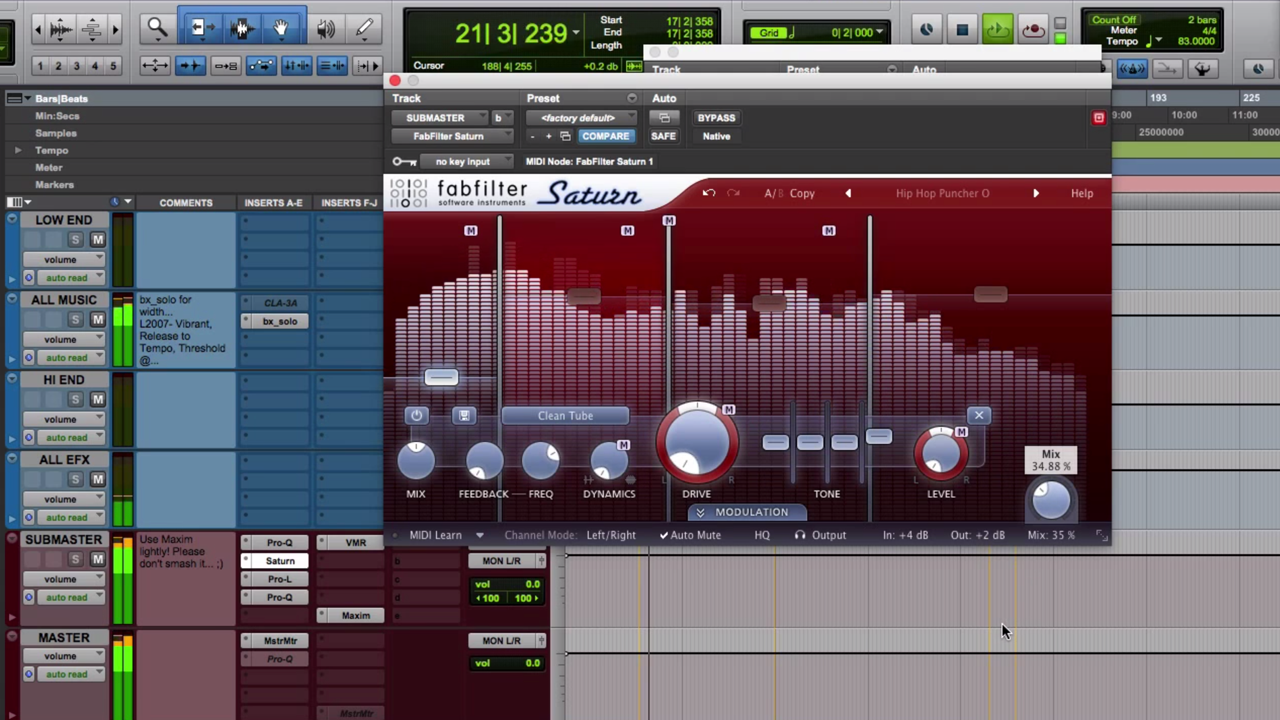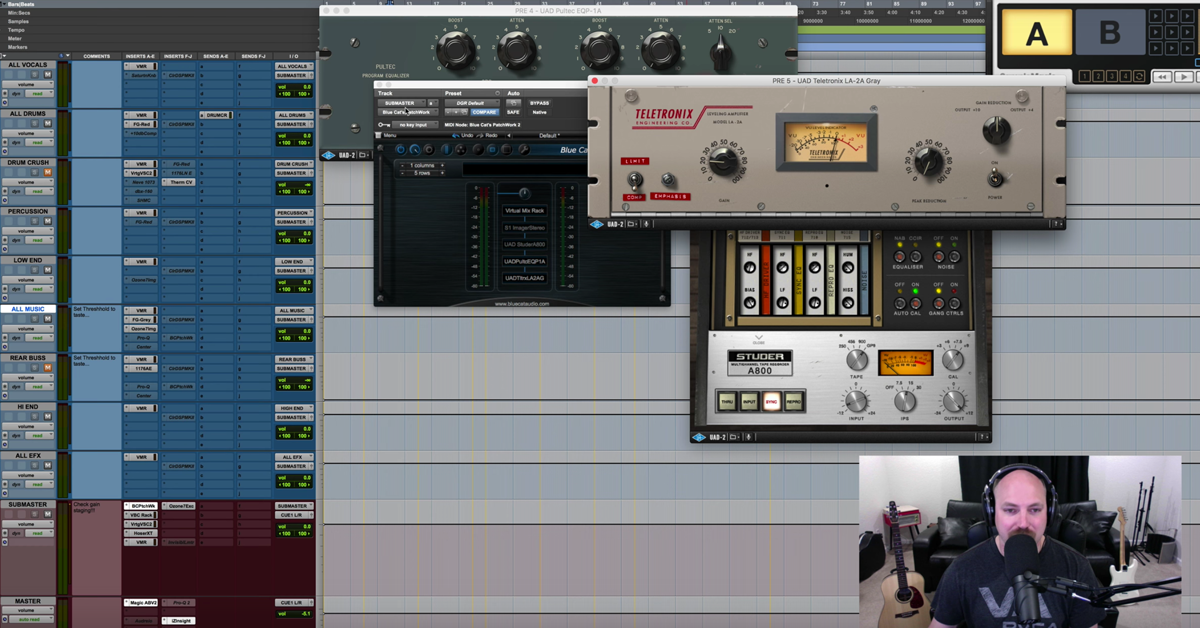Mixing Piano and Rhodes with David Glenn [Excerpt]
Today’s video is an excerpt from my membership site. It’s called The Mix Academy. You may have heard of it. You can go to themixacademy.com right now and I’ve got a $1 trial. It gets you 30 days in the site.
Multi-tracks that you can download, practice your mixing, follow me start to finish tutorials, mix the song, add it to your resume. We’ve got a private community, all kinds of great stuff happening in there, and a new feature is what I’m calling interactive mix critiques.
Members are going to be able to send me their mixes, we’re going to filter through and pick several of them every month, and I’m going to import them into Pro Tools, and it’s not going to just be, “Hey, pull your kick up, pull your snare,” little things like that.
Of course that’ll be involved, but if I hear something in the low end that I would do different, I’m going to get down there and I’m going to show you — I’m going to open up plug-ins and kind of feature a couple of techniques and things for each of the mixes that get selected.
So some really cool stuff happening over there. $1 gets you in. themixacademy.com. We’ll put a link in the description below.
Moving on into today’s video, this is straight from The Mix Academy, and I hope you enjoy it. Thanks again!
Let’s talk about this piano here. I’ve got an SSL, I warmed it up like crazy. 150 is boosted and top on it, compressed the snot out of this guy. I used a compressor I haven’t used before, we’ll show that in a second, but here is the before…
[piano, before]
Pretty good piano sound for — it just has a little bit of that top end thing, but since we took the top end out, this is important. Because I found that 3-5kHz, that mid-range thing that I’ve been talking about all of this video, because we dip that down on all the tracks, some of the tracks that may have sounded okay needed to be adjusted as well, because they needed now to compliment and be right mixed to feel better together as a whole, and so this is something with the piano, again, was trial and error from the direction that I originally had.
Here’s again before.
[piano, before]
[piano with EQ]
Okay, so much fuller.
Taking out that harsh…
One more time, here’s that back in. You can hear it, right? Just that right there.
Softens it up. And then I compress the crap out of it with the McDSP. I don’t even know what this is, a retro compressor. 4030. Here’s no compression.
[piano, no compression]
I felt like it was just pokey and it was sticking out for the licks. I wanted a little more sustain from the chords, and so compressing it.
[piano, with compression]
Go back to the top of that.
[piano]
Brings out the chords more.
Pushes down. Really, mostly it’s pushing down the lick there.
Okay, moving on, we’ve got another piano, another 2500 cycles that I just didn’t care for. Then I automated this. We’ll show that in a little bit. Then I felt like this one was a bit pokey, so I pulled back the attack and boosted sustain.
Here’s no processing.
[electric piano, no processing]
There’s that frequency coming out.
[electric piano, with EQ]
Softens it up a bit, and then this guy, the Alloy 2 to take away the tingy attack of this part.
[electric piano with Alloy 2]
So instead of using a compressor to — with a fast attack and just smack it down, I used a transient designer and pulled the attack back.
The EQ here — let me find — where did I automate that, I think it was at the soft section here.
Okay, so this at the first verse, when this lick plays, I felt like it was — let me turn it off. You can hear it here.
So fairly subtle, but…
[mix]
That you know, 1 to 3kHz. I don’t know, it’s just — it’s just like nothing except the vocal has that kind of presence and then this thing comes in and it just felt distracting, so I automated a Pro-Q2 for just that section, and I pulled back 2.5kHz a whole ton with a wide bell.
So one more time, here is before this EQ…
[mix, piano before EQ]
Distracting, right? The left ear there.
And now with this…
[mix, piano with EQ]
You just feel the music on the left side, you feel that lick instead of it being pokey and distracting.
So that was a quick decision, and I rocked that. The Rhodes, I went much warmer than in my original mix. I boosted 150 15dB or so. Here is the Rhodes before any processing.
[Rhodes, no processing]
Yeah, the verse, that’s a good place.
[Rhodes, no processing]
And then with the boost, you can see here, 150, 170, somewhere in there. 15dB.
[Rhodes, with EQ]
Much warmer.
[Rhodes]
Probably even could’ve compressed it.
However, okay, so I just did a video for The Pro Audio Files where I talk about overheads, and I had the overheads from the song where we high passed them like crazy originally in the production, so I had to boost 15-20dB at 200-300Hz and below to get some warmth back into them.
This is the exact same situation. The Rhodes, why I’m boosting 15dB is I’m using my ears to EQ it. I felt like it was too thin, I wanted it to be warmer, so I just went to town on that.
So that was that, and then this guy, I even put more love into it. So here is a — but this is a bit more surgical, whereas the SSL, I just — let me get in the ballpark, and then with this I’m being a little more OCD. So here’s before.
[Rhodes, before EQ]
And then after.
[Rhodes, after EQ]
Just taking the top and the mid out.
It’s more like a low-mid pad.
In context, here is in the track.
[mix]
It’s not bad, but I just — I was like, you know, let me make it a little more chill, a little more soft.
[mix]
Let’s put this processing back in.
[mix]
So it almost creates a soft, warm, “mmm” on the pad. Like, just a little bit of a pressing on the keys a little bit just to help the transition feel a bit more obvious as opposed to being a mid/top end Rhodes sound.
I did catch a glitch in my production here. The Rhodes and the pad had an extension they held on through — they kept sustaining through this little break here.
[mix]
They continued to play, so I cropped it back. There was no separation between those two.
So I think I muted or something in my original mix, but in the production, I didn’t include that in the files for you guys, so a little bit of a break there between the first verse and the first chorus. The soft chorus.
[mix]
Sweet. Then the pad down here, we were experimenting with Low Ender…

![Mixing Piano and Rhodes with David Glenn [Excerpt]](https://i.ytimg.com/vi/HKrSO5RdkK0/hqdefault.jpg)



